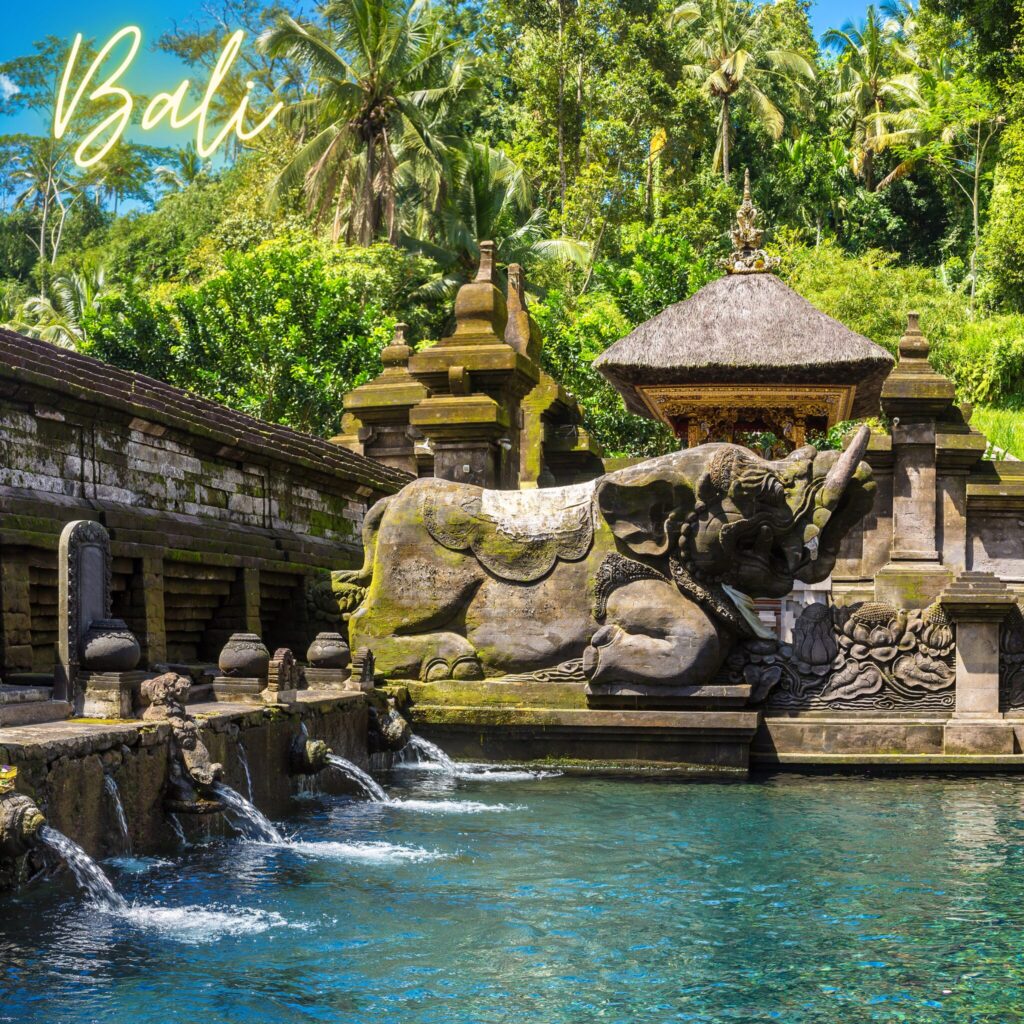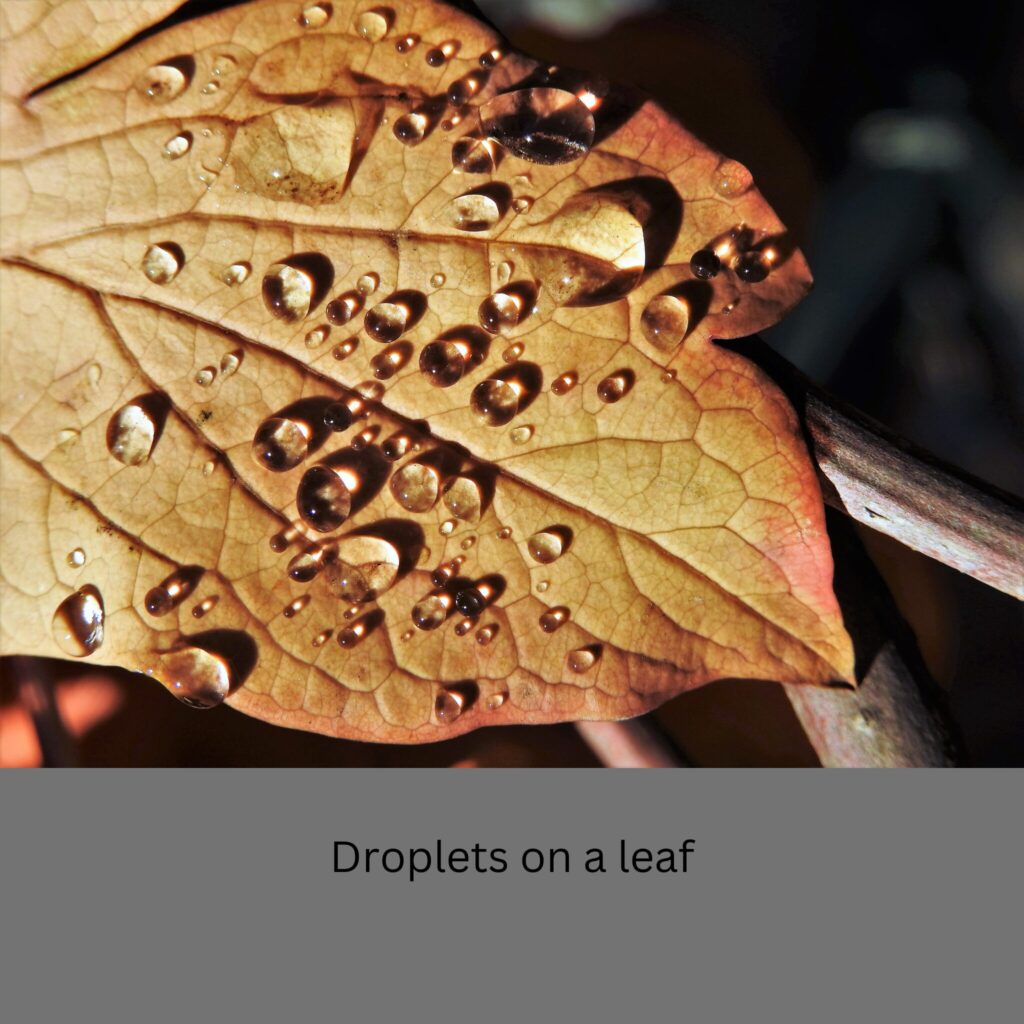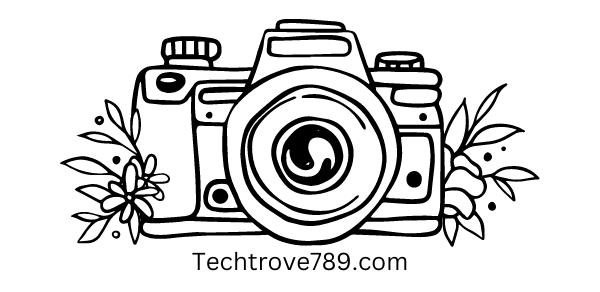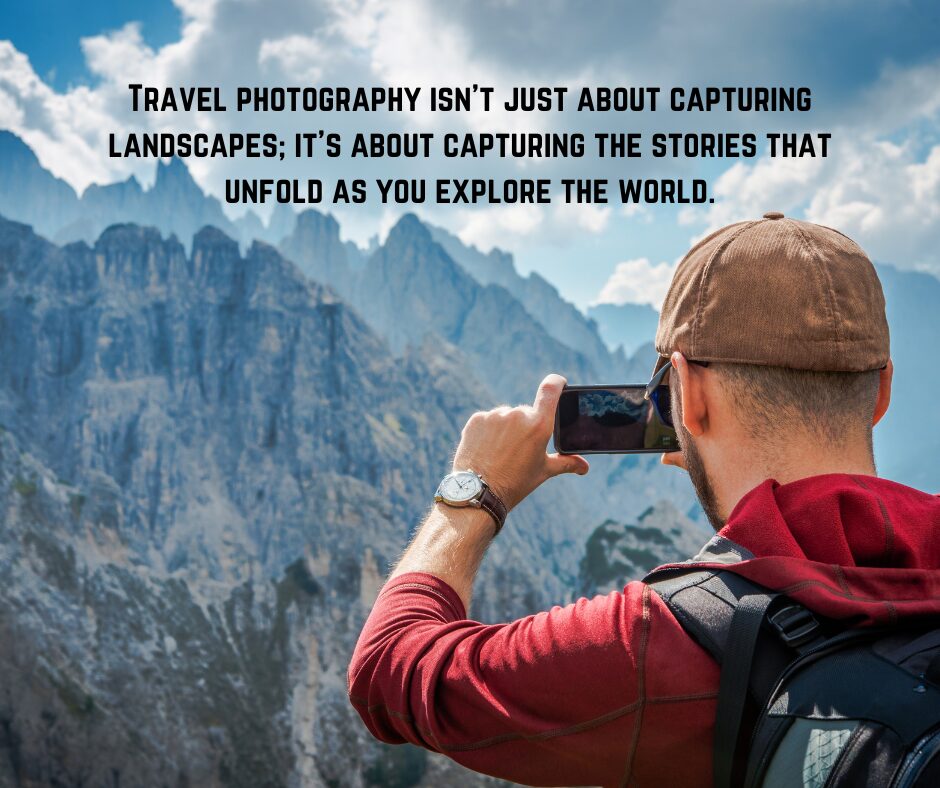*This post may contain affiliate links for which I earn commissions.*
Travel photography is a wonderful way of capturing the essence of your journeys and preserve the memories of the places you’ve visited and the people you’ve met. Imagine standing on a cliffside in Santorini, Greece, just as the sun begins to dip below the horizon, casting a golden glow over the iconic white-washed buildings. With the right photography skills, you can freeze this breathtaking moment in time and relive it whenever you look at your photos.
Sometimes, the best travel photos are the ones that aren’t perfect. On a holiday in Bali, I tripped and my wife snapped a photo of me sprawled out in the dirt, surrounded by breathtaking scenery. It’s a reminder that even mishaps become funny stories when you travel with good company
In this guide, we’ll share essential travel photography tips that will help you take stunning photos on your next adventure. Whether you’re a seasoned photographer or just starting out, these tips will enhance your ability to capture the beauty and uniqueness of each destination. From planning and preparation to mastering composition and lighting, we’ve got you covered. So grab your camera and get ready to embark on a fun filled journey of photographic discovery.

Section 1: Planning and Preparation
Proper planning and preparation are essential for successful travel photography. By studying your destinations beforehand, selecting the right equipment, and packing wisely, you can ensure that you’re ready to capture the stunning photos of your journey.
Research Destinations
- Finding Picturesque Locations: Discovering the best spots for photography requires thorough research.
- Tips:
- Use travel guides, blogs, and social media platforms like Instagram and Pinterest to find popular and hidden photography locations.
- Join online photography forums and communities to get recommendations from fellow photographers.
- Look for local photography tours or workshops that can guide you to the best spots.
- Tips:
Gear Selection
- Essential Camera Equipment and Accessories: Choosing the right gear can make a huge difference in the quality of your photos.
- Camera: Decide between a DSLR, mirrorless camera, or a high-quality smartphone, depending on your needs and what you prefer.
- Lenses:
- Wide-Angle Lens: Ideal for capturing stunning landscapes and architecture.
- Zoom Lens: Perfect for getting close-up shots without disturbing your subject.
- Tripod: A lightweight, portable tripod is essential for stability, especially in low-light conditions or for long lengths of time.
- Filters:
- Polarizing Filter: Reduces glare and enhances the colors, especially in bright sunlight.
- ND Filter: Allows for longer exposures in bright conditions, creating effects like smooth water or motion blur.
- Backup Batteries and Memory Cards: Ensure you have enough power and storage to last through long shooting sessions.
Packing Smart
- Protecting and Organizing Your Gear: Proper packing ensures your equipment remains safe and easily reached.
- Tips:
- Use a padded camera bag with different pockets to keep your gear organized and protected.
- Pack silica gel packets to keep moisture away from your equipment in hot,humid conditions.
- Bring a lens cleaning kit to maintain clear and sharp images.
- Consider a waterproof cover or dry bag to protect your gear from rain or splashes.
- Pack light and only bring essential gear to avoid unnecessary weight and bulk.
- Tips:
By really researching your destinations, selecting the right gear, and packing cleverly, you will be well-prepared to capture beautiful travel photos. Proper planning ensures that you can focus on your photography, have fun with it and make the most of every opportunity, no matter where your adventures take you.
Section 2: Understanding Lighting
Lighting is one of the most critical elements in photography, and it can make or break a shot for you. Understanding how to work with different types of light will significantly improve your travel photos and all photos for that matter.
Golden Hour
- Benefits: The golden hour, which occurs just after sunrise and just before sunset, provides soft, warm, and diffused light. This light is perfect for capturing landscapes, portraits, and cityscapes with a magical quality.
- Tips:
- Plan your shoots around these times for the best lighting conditions.
- Use apps like PhotoPills or The Photographer’s Ephemeris to determine the exact times of sunrise and sunset at your location.
- Experiment with backlighting to create stunning silhouettes.
Midday Challenges
- Harsh Lighting: Shooting during midday when the sun is directly overhead can result in harsh shadows and high contrast.
- Tips:
- Seek shade or use diffusers to soften the light on your subject.
- Utilizethe use of reflectors to bounce light into shadowed areas.
- Adjust your camera settings: lower the ISO, use a smaller aperture, and increase the shutter speed to properly expose your images.
- Consider using filters, such as polarizers, to reduce glare and enhance colors.
Blue Hour and Night Photography
- Blue Hour: The blue hour, which occurs just before sunrise and just after sunset, provides a cool, twilight ambiance that is perfect for capturing cityscapes and night scenes.
- Tips for Blue Hour:
- Use a tripod to avoid camera shake in low-light conditions.
- Set a low ISO to minimize noise and achieve a clean image.
- Experiment with long exposures to capture light trails and motion blur.
- Night Photography: Capturing photos at night requires a different set of skills and equipment.
- Tips for Night Photography:
- Use a tripod and a remote shutter release to prevent camera shake.
- Set a low ISO to reduce noise, but be prepared to balance it with longer exposure times.
- Open the aperture wide to allow as much light in as possible while keeping your subject in focus.
- Experiment with light painting, where you use a light source to add creative effects to your photos.
Las Vegas at night is a sensory overload for me. Flashing signs, busy streets with people everywhere. Taking my camera and tripod, I spent ages capturing the strips electric energy. The final photos were a mirage of color and light, and I can still feel the city energy when I look over my photos.

Understanding and mastering these lighting techniques will help you take your travel photography to the next level, allowing you to capture the beauty and atmosphere of each destination, no matter the time of day.
Section 3: Composition Techniques
Mastering composition is essential for creating visually striking and unforgetable travel photos. Here are some key techniques to help you frame your shots effectively:
Rule of Thirds
- Definition: The rule of thirds involves dividing your frame into nine equal parts with two horizontal and two vertical lines. Positioning your subject along these lines or at their intersections creates a balanced and engaging composition.
- Tips:
- Enable the grid feature on your camera or smartphone to easily apply the rule of thirds.
- Place key elements like horizons, buildings, or people along the grid lines.
- Avoid centering your subject; placing it off-center can create more dynamic and interesting images.
Leading Lines
- Definition: Leading lines are lines within the photo that lead the viewer’s eye to the main subject, creating a sense of depth and movement.
- Tips:
- Use roads, rivers, pathways, fences, or architectural elements as leading lines.
- Position these lines to draw the eye from the foreground to the background.
- Diagonal lines can add a sense of action and dynamism to your photos.
Framing
- Definition: Framing involves using elements in the scene to create a natural frame around your subject, drawing attention and adding context.
- Tips:
- Look for arches, windows, doorways, tree branches, or other natural frames.
- Use the frame to focus attention on the main subject while adding depth.
- Ensure the frame complements rather than overwhelms the main subject.
Perspective and Angles
- Definition: Changing your perspective and shooting from different angles can give your photos a unique and captivating look.
- Tips:
- Experiment with high and low angles to create different viewpoints.
- Use wide-angle lenses for expansive landscapes and dramatic effects.
- Try unusual positions, such as shooting from the ground or from above, to add levels of interest.
Foreground Interest
- Definition: Including elements in the foreground can add depth and make your photos more engaging.
- Tips:
- Find interesting objects, such as rocks, flowers, or people, to include in the foreground.
- Use a wide aperture to create a shallow depth of field, keeping the foreground sharp and the background softly blurred.
- Balance the foreground, midground, and background to create a sense of scale and dimension.
By using these composition techniques in your photography, you will be able to create incredible images that tell the story of your adventures. Experiment with these tips to discover your own unique style to capture the beauty of each place you visit and also the people.
Section 4: Capturing Local Culture and People
Travel photography isn’t just about landscapes and landmarks; it’s also about capturing the feeling of the places you visit through their culture and people. Here are some tips to help you photograph local culture and people respectfully and naturally.
Engaging with Locals
- Building Rapport: Establishing a connection with locals can lead to more genuine and compelling photographs.
- Tips:
- Learn a few basic phrases in the local language to break the ice.
- Show genuine interest in their stories and culture.
- Be friendly and approachable to make people feel more comfortable.
- Tips:
Asking for Permission
- Respect and Consent: Always ask for permission before photographing people to respect their privacy and culture.
- Tips:
- Use non-verbal gestures, such as pointing to your camera and smiling, if there’s a language barrier.
- Respect their decision if they decline to be photographed.
- Offer to share the photo with them, either by showing it on your camera or promising to send it later.
- Tips:
Candid Shots
- Capturing Authentic Moments: Candid photography can showcase the everyday life and genuine emotions of people.
- Tips:
- Use a telephoto lens to capture candid moments from a distance without being intrusive.
- Be patient and observant, waiting for natural interactions and expressions.
- Blend into the environment to avoid drawing attention to yourself.
- Tips:
Cultural Sensitivity
- Understanding Customs: Being aware of and respecting local customs and traditions is crucial when photographing people and their cultural practices.
- Tips:
- Research cultural norms and practices before you arrive at your destination.
- Dress appropriately and behave respectfully to avoid offending locals.
- Avoid photographing sensitive or sacred events without explicit permission.
- Tips:
Showcasing Traditions and Festivals
- Documenting Cultural Events: Festivals and traditional ceremonies can offer rich opportunities for vibrant and dynamic photos.
- Tips:
- Arrive early to find the best vantage points and observe the preparations.
- Focus on details, such as costumes, decorations, and rituals, to tell a more complete story.
- Capture both wide-angle shots of the event and close-ups of individual participants.
- Tips:
By following these tips, you can capture the essence of local culture and the people in your travel photos, creating images that tell powerful and authentic stories. Remember to always approach your subjects with respect and sensitivity to create meaningful connections and photographs.
Section 5: Technical Settings and Tips
Understanding and mastering your camera’s technical settings is crucial for capturing high-quality travel photos. Here are some essential tips that will help you get the best results in possible.
Manual Mode Mastery
- Understanding Exposure: Learning to control aperture, shutter speed, and ISO will give you greater creative control over your photos.
- Aperture: Controls the depth of field. Use a wide aperture (low f-stop number) for a shallow depth of field and a narrow aperture (high f-stop number) for a deeper depth of field.
- Shutter Speed: Controls motion blur. Use a fast shutter speed to freeze action and a slow shutter speed to capture motion, such as flowing water or light trails.
- ISO: Controls the camera’s sensitivity to light. Use a low ISO for bright conditions and a higher ISO for low-light situations, but be aware that higher ISO settings can bring in noise.
Focus Techniques
- Achieving Sharp Focus: Ensuring your photos are sharp and clear is essential for professional-looking travel photos.
- Tips:
- Use single-point autofocus to have precise control over your focus point.
- Focus on the eyes when photographing people for a more engaging portrait.
- Use manual focus for challenging situations, such as low light or macro photography.
- Tips:
Stabilization
- Preventing Camera Shake: Stabilizing your camera is crucial, especially in low-light conditions or when using a slow shutter speed.
- Tips:
- Use a tripod or monopod to keep your camera steady.
- Utilize the image stabilization features in your camera or lens.
- Use a remote shutter release or the camera’s timer function to avoid camera shake when pressing the shutter button.
- Tips:
Post-Processing
- Enhancing Your Photos: Basic editing can significantly improve the quality and impact of your travel photos.
- Tips:
- Use photo editing software like Adobe Lightroom or Photoshop for adjustments.
- Adjust exposure, contrast, and saturation to enhance your image.
- Use cropping and straightening to improve the composition and remove any distractions.
- Apply sharpening and noise reduction to ensure your images are crisp and clean.
- Tips:
Practical Tips for Various Conditions
- Low Light: Use a wide aperture, slower shutter speed, and higher ISO. Stabilize your camera to avoid blur.
- Bright Sunlight: Use a lower ISO, faster shutter speed, and smaller aperture. Consider using a polarizing filter to reduce glare and enhance colors.
- Action Shots: Use a fast shutter speed to freeze motion and continuous autofocus to track moving subjects.
- Landscapes: Use a narrow aperture for greater depth of field and a tripod to ensure sharpness. Consider using ND filters to manage exposure.
By mastering these technical settings and tips, you’ll be able to adapt to various shooting conditions and be able to create high-quality travel photos that truly capture the depth of your travels. Experiment with different settings and techniques to discover what works best for you and your style.
Section 6: Safety and Ethics
Travel photography comes with the responsibility of respecting people, places, and cultural norms. Ensuring the safety of both yourself and your equipment, along with maintaining ethical standards, is crucial for a successful and respectful travel photography experience.
Protecting Your Gear
- Avoiding Theft and Damage: Keeping your equipment safe is essential to prevent loss or damage during your travels.
- Tips:
- Use a discreet camera bag that doesn’t draw attention to your gear.
- Keep your camera and lenses close to your body, especially in crowded areas.
- Use anti-theft features like lockable zippers and straps.
- Insure your equipment to protect against theft or damage.
- Back up your photos regularly to multiple locations (external drives, cloud storage).
- Tips:
Respecting the Environment
- Leave No Trace: Minimizing your presence on natural and urban environments is important.
- Tips:
- Stay on designated paths to avoid damaging delicate ecosystems.
- Do not disturb wildlife or remove natural objects from their habitats.
- Dispose of trash properly and recycle whenever possible.
- Use environmentally friendly products, such as rechargeable batteries and biodegradable cleaning supplies.
- Tips:
Ethical Considerations
- Privacy and Consent: Respecting people’s privacy and obtaining their consent is essential for ethical travel photography.
- Tips:
- Always ask for permission before photographing individuals, especially in private or sensitive settings.
- Be mindful of local customs and cultural norms regarding photography.
- Avoid taking photos of vulnerable individuals or groups without explicit permission.
- Do not exploit or sensationalize the subjects of your photos.
- Tips:
Cultural Sensitivity
- Understanding Local Norms: Being aware of and respecting cultural differences is crucial for responsible travel photography.
- Tips:
- Research cultural practices and taboos related to photography before your trip.
- Dress appropriately to show respect for local customs.
- Engage with locals and ask about any photography restrictions or guidelines.
- Be aware of religious or sacred sites where photography might be prohibited.
- Tips:
Personal Safety
- Staying Safe While Shooting: Prioritizing your safety while photographing in unfamiliar locations is essential.
- Tips:
- Avoid going into unsafe areas, especially when alone or it is dark.
- Keep a low profile and avoid displaying expensive gear in high-risk areas.
- Stay aware of your surroundings and trust your instincts.
- Travel with a companion when possible, especially in remote or less populated areas.
- Share your itinerary with someone you trust and check in regularly.
- Tips:
By following these safety and ethical guidelines, you can ensure a respectful and responsible approach to travel photography. This not only helps protect you and your equipment but also fosters positive interactions with the people and places you photograph, leading to more meaningful and impactful images.
Conclusion
Travel photography is a rewarding way to capture the beauty and heart of your adventures, creating lasting memories that you can share with others. By applying the tips and techniques covered in this guide, you’ll be well-equipped to take stunning photos that truly represent the spirit of the places you visit.

Recap
- Planning and Preparation: Researching destinations, choosing the right gear, and packing smartly.
- Understanding Lighting: Mastering golden hour, handling midday challenges, and exploring blue hour and night photography.
- Composition Techniques: Utilizing the rule of thirds, leading lines, framing, perspective, and foreground interest.
- Capturing Local Culture and People: Engaging with locals, asking for permission, taking candid shots, and respecting cultural norms.
- Technical Settings and Tips: Mastering manual mode, achieving sharp focus, stabilizing your camera, and post-processing.
- Safety and Ethics: Protecting your gear, respecting the environment, maintaining ethical standards, and ensuring personal safety.
Encouragement
Photography is an art form that evolves with practice and experimentation. Don’t be afraid to try new techniques, explore different perspectives, and make mistakes along the way. Each photo you take is a step towards becoming a better photographer and storyteller.
My passion for photography started with losing my Camera on a trip. Feeling annoyed and discouraged, I wandered a local park, kicking the stones. That’s when I noticed the intricate patterns on a fallen leaf. Using my phone, I started capturing close-up photos. While I never found my camera, I am now a much better photographer and I discovered a new way to see through the lens.

Call to Action
We hope these travel photography tips have inspired you to capture the world through your lens with confidence and creativity. Share your travel photos and experiences on social media. We’d love to see your journey and the amazing moments you capture.
Happy travels and happy shooting!
Additional Resources
Enhance your travel photography skills with these recommended resources. From books and blogs to gear reviews and photography communities, these tools will help you further your knowledge and stay inspired.
Recommended Reading
- Books:
- “The Travel Photography Book” by Scott Kelby: A comprehensive guide covering tips, techniques, and inspiration for travel photography.
- “Lonely Planet’s Guide to Travel Photography” by Richard I’Anson: Practical advice from a renowned travel photographer.
- “Photographing the World: A Guide to the Best Photography Locations” by Peter Eastway and David Bartschi: A collection of stunning photography spots around the globe.
- Blogs:
- Expert Vagabond: Offers practical travel photography tips, tutorials, and gear recommendations.
- Nomadic Matt: Features photography tips alongside comprehensive travel advice and destination guides.
- Digital Photography School: Provides tutorials, tips, and techniques for photographers of all skill levels.
Gear Reviews
- Websites:
- DPReview: In-depth reviews and comparisons of cameras, lenses, and photography accessories.
- The Camera Store TV: Offers video reviews and hands-on tests of the latest photography gear.
- B&H Photo Video: Detailed product descriptions, reviews, and customer ratings for a wide range of photography equipment.
Photography Communities
- Online Groups and Forums:
- Flickr Groups: Join groups dedicated to travel photography to share your work and get feedback.
- Reddit – r/photography: A community for photographers to discuss tips, share photos, and seek advice.
- 500px: A platform for sharing high-quality photos, gaining inspiration, and connecting with other photographers.
Tutorials and Courses
- Online Learning:
- Udemy: Offers a variety of photography courses, from beginner to advanced levels.
- CreativeLive: Features classes taught by professional photographers on various aspects of photography.
- Lynda.com (LinkedIn Learning): Provides comprehensive photography courses covering technical skills and creative techniques.
Photography Apps
- Planning and Shooting:
- PhotoPills: An all-in-one app for planning your shoots, including sun and moon tracking, exposure calculations, and more.
- The Photographer’s Ephemeris: Helps you plan outdoor photography shoots with detailed information about natural light conditions.
- Snapseed: A powerful and user-friendly photo editing app for on-the-go enhancements.
These resources will support your journey in travel photography, providing valuable information, inspiration, and tools to help you capture stunning images wherever you go. Dive into these materials, join communities, and continue learning to refine your skills and expand your photographic skills.

